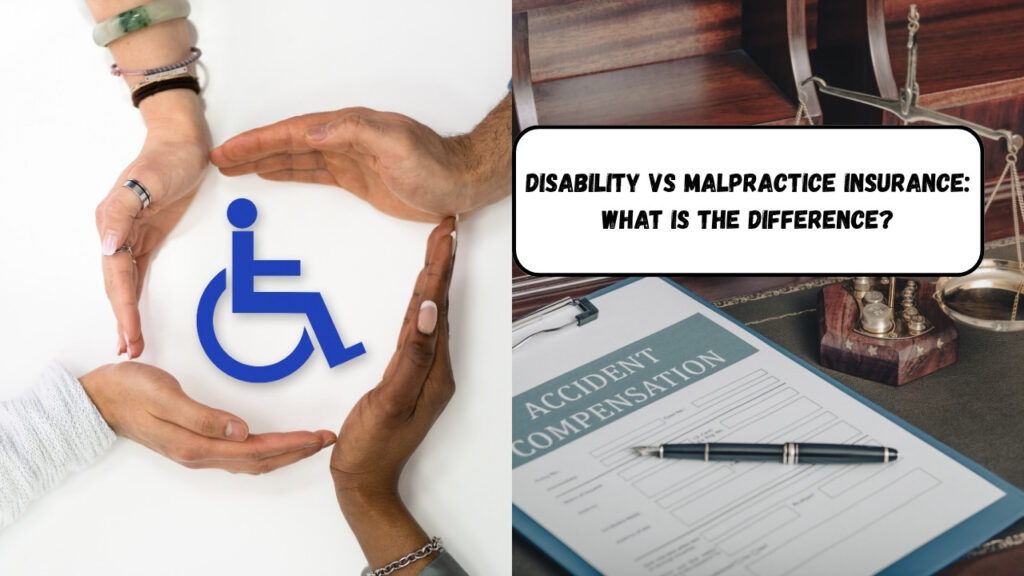In the world of malpractice insurance, there are two main types that often leave professionals scratching their heads: claims-made and occurrence policies. The choice between the two can be a matter of confusion and significant financial implications. That’s why it’s crucial to unravel the mystery and understand which one is right for you.
Claims-made policies provide coverage for claims made during the policy period, regardless of when the incident occurred. This means that if a claim is made after the policy expires, you may not be covered. On the other hand, occurrence policies cover any incidents that occur during the policy period, regardless of when the claim is made.
To determine which policy is best suited to your needs, it’s essential to consider factors such as the nature of your profession, potential risks, and coverage needs. Understanding the advantages and disadvantages of each type can help you make an informed decision.
In this article, we will explore the differences between claims-made and occurrence policies, highlight the pros and cons of each, and provide guidance to help you choose the right malpractice insurance for your specific circumstances. Let’s unravel the mystery together and ensure you have the coverage you need when it matters most.
Understanding Claims-Made Malpractice Insurance
Claims-made policies provide coverage for claims made during the policy period, regardless of when the incident occurred. This means that if a claim is made after the policy expires, you may not be covered. However, claims-made policies often offer the option to purchase “tail coverage,” which extends the reporting period for claims made after the policy has ended.
One of the main advantages of claims-made insurance is its lower initial premiums. Since claims are limited to the policy period, the insurer can more accurately assess the potential risks and calculate premiums accordingly. This can be especially beneficial for professionals who are just starting their careers or have a limited budget.
However, it’s important to consider that claims-made policies rely on continuous coverage. If you switch insurers or let your coverage lapse, you may lose protection for any future claims. This can be a significant disadvantage if you plan to change insurers or retire in the future.
Pros and Cons of Claims-Made Malpractice Insurance
Pros:
- Lower initial premiums
- Tail coverage option for claims made after the policy expires
- Accurately assesses potential risks within the policy period
Cons:
- Relies on continuous coverage
- May lose future protection if you switch insurers or let coverage lapse
Understanding Occurrence Malpractice Insurance
Occurrence policies, on the other hand, cover any incidents that occur during the policy period, regardless of when the claim is made. This means that even if a claim is made years after the policy has expired, you will still be covered as long as the incident occurred during the policy period. Occurrence policies provide long-term coverage protection, even if you switch insurers or retire.

One of the main advantages of occurrence insurance is its simplicity. You don’t need to worry about purchasing tail coverage or maintaining continuous coverage. Once the policy period ends, you are still protected for any claims related to incidents that occurred during that time.
However, occurrence policies generally come with higher initial premiums compared to claims-made policies. This is because the insurer needs to account for potential future claims that may arise even after the policy has expired. This higher cost can be a disadvantage for professionals who are just starting their careers or have a limited budget.
Pros and Cons of Occurrence Malpractice Insurance
Pros:
- Long-term protection for incidents that occur during the policy period
- No need for tail coverage or continuous coverage
- Peace of mind even if you switch insurers or retire
Cons:
- Higher initial premiums
- Premiums account for potential future claims, even after the policy expires
Determining the Right Type of Malpractice Insurance for your needs
When choosing between claims-made and occurrence insurance, several factors should be considered to determine the right type of malpractice insurance for your needs.
- Nature of your profession: Consider the nature of your profession and the potential risks involved. If your profession is more prone to delayed claims or if the statute of limitations is longer, occurrence insurance may be more suitable. On the other hand, if the majority of claims are filed shortly after incidents occur, claims-made insurance may be a better fit.
- Coverage needs: Evaluate your coverage needs and the level of risk you are comfortable with. Claims-made policies offer more flexibility to adjust coverage limits as your practice grows. Occurrence policies provide long-term peace of mind but may have higher upfront costs.
- Financial considerations: Assess your financial situation and budget. Claims-made policies generally have lower initial premiums, making them more affordable for professionals starting their careers. Occurrence policies may have higher upfront costs but provide long-term protection, which can be beneficial for established professionals.
- Future plans: Consider your future plans. If you anticipate switching insurers or retiring in the future, occurrence insurance ensures continued protection regardless of the insurance provider. If you plan to maintain a long-term relationship with your insurer, claims-made insurance may be a suitable option.
Common Misconceptions About Claims-Made and Occurrence Insurance
There are some common misconceptions surrounding claims-made and occurrence insurance that can further complicate the decision-making process. Let’s address a few of these misconceptions:
- “Claims-made insurance is always cheaper”: While claims-made insurance often has lower initial premiums, this may not always be the case. The cost depends on various factors such as the nature of your profession, coverage limits, and the insurer’s assessment of potential risks.
- “Occurrence insurance provides unlimited coverage”: Occurrence insurance covers claims related to incidents that occur during the policy period, but it still has coverage limits. It’s important to review the policy details and ensure the coverage meets your needs.
- “Claims-made insurance doesn’t require tail coverage”: Tail coverage is essential for claims-made policies if you want to be protected against claims made after the policy expires. Without a tail coverage policy, you may be exposed to liability and financial risk.
- “Switching from claims-made to occurrence insurance is difficult”: While switching from claims-made to occurrence insurance can have some challenges, it is possible. It’s important to consult with an insurance professional who can guide you through the process and ensure a smooth transition.
How to Switch from Claims-Made to Occurrence Insurance (or vice versa)?
If you’re considering switching from claims-made to occurrence insurance (or vice versa), there are a few steps you can take to make the process smoother:
- Assess your needs: Evaluate your current coverage needs and determine if switching policies is the right decision for you. Consider factors such as your profession, potential risks, and future plans.
- Consult with an insurance professional: Seek guidance from an insurance professional who specializes in malpractice insurance. They can assess your situation, explain the options available to you, and help you navigate the transition process.
- Review existing policy: Carefully review your existing policy, including any provisions related to tail coverage or extended reporting periods. Understand the implications of switching policies and ensure you have the necessary coverage during the transition.
- Research insurers: If you decide to switch insurers, research reputable companies that offer the type of insurance you’re considering. Compare quotes, coverage options, and customer reviews to make an informed decision.
- Notify your current insurer: Inform your current insurer about your intention to switch policies. Understand any cancellation or termination procedures, including any potential penalties or fees.
- Purchase new policy: Once you’ve selected a new insurer, purchase the new policy and ensure it provides the coverage you need. Coordinate the start and end dates of the policies to avoid any gaps in coverage.
- Consider tail coverage: If you’re switching from claims-made to occurrence insurance, consider purchasing tail coverage to protect yourself against claims made after your claims-made policy expires.
Choosing the right malpractice insurance can have significant financial implications and provide peace of mind in the face of potential claims. Understanding the differences between claims-made and occurrence policies, weighing the pros and cons, and considering factors such as your profession, coverage needs, and future plans will help you make an informed decision.
While claims-made insurance may offer lower initial premiums and flexibility in adjusting coverage limits, it relies on continuous coverage and may require tail coverage. Occurrence insurance provides long-term protection, regardless of insurer changes or policy expiration, but generally comes with higher upfront costs.
By evaluating your specific circumstances and seeking guidance from insurance professionals, you can unravel the mystery of claims-made vs. occurrence malpractice insurance and choose the policy that best suits your needs. Don’t let the confusion hold you back – protect yourself and your practice with the right malpractice insurance today.










